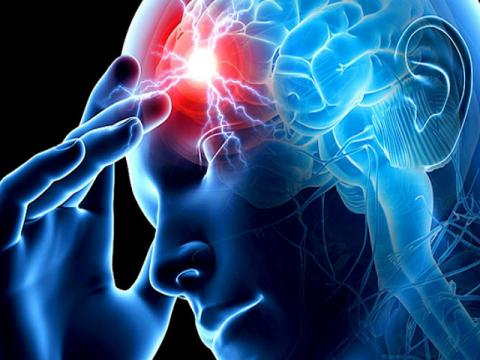State of memory could explain brain disorders
"This is a really fundamental find—it's like the dark matter of memory," says Geoffrey Woodman, a cognitive neuroscientist at Vanderbilt University in Nashville who was not involved with the work. "It's hard to really see it or measure it in any clear way, but it has to be out there. Otherwise, things would fly apart."
Cognitive neuroscientist Nathan Rose and colleagues at the University of Wisconsin (UW) in Madison initially had subjects watch a series of slides showing faces, words, or dots moving in one direction. They tracked the resulting neural activity using functional magnetic resonance imaging (fMRI) and, with the help of a machine learning algorithm, showed they could classify the brain activity associated with each item. Then the subjects viewed the items in combination—a word and face, for example—but were cued to focus on just one item. At first, the brain signatures of both items showed up, as measured in this round with electroencephalography (EEG). But neural activity for the uncued item quickly dropped to baseline, as if it had been forgotten, whereas the EEG signature of the cued item remained, a sign that it was still in working memory. Yet subjects could still quickly recall the uncued item when prompted to remember it a few seconds later.
Rose, who recently left UW for the University of Notre Dame in South Bend, Indiana, and his colleagues then turned to transcranial magnetic stimulation (TMS), a noninvasive method that uses rapidly changing magnetic fields to deliver a pulse of electrical current to the brain. They had subjects perform the same cued memory task, then applied a broad TMS pulse just after the signature of the uncued memory item had faded. The appropriate neural activity for that "forgotten" item spiked, showing the memory was reactivated into immediate consciousness from its latent state. What's more, when the TMS directly targeted the brain areas that were initially active for the uncued item, the reactivation response was even stronger.
The study doesn't address how synapses or other neuronal features can hold this second level of working memory, or how much information it can store. "It's a primitive early step in understanding how we bring things into mind," says UW cognitive neuroscientist Bradley Postle, a study co-author.
Woodman agrees. "Good studies tend to bring to light more questions than they answer," he says. "This work absolutely does that." Ultimately, he says, this new memory state could have a range of practical implications, from helping college students learn more efficiently to assisting people with memory-related neurological conditions such as amnesia, epilepsy, and schizophrenia.
Jessica Boddy

